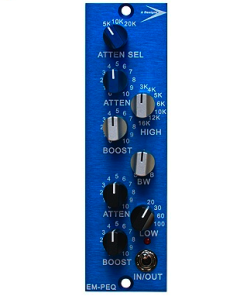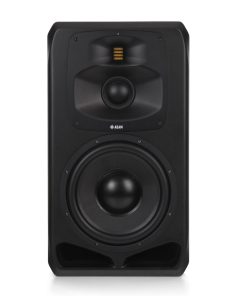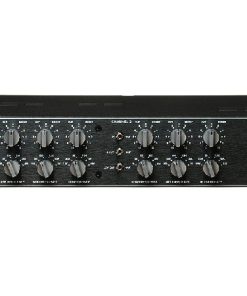Boz Digital Labs Panipulator Boz Digital Labs
$ 0,00
Panipulator is an indispensable, CPU-friendly tool that lets you achieve accurate mix translation across various less-than-ideal playback systems. With simple streamlined controls, you can you check mono compatibility, speaker polarity, identify phase issues in multi-miked instruments, isolate speakers in mono, and more—and it’s absolutely FREE.
Available Formats
- Mac: osx 10.11 or greater
- Windows: XP or greater
- 64-bit VST2.4, VST3, AU, AAX
Features
- Simple one click channel tools
- Check mono compatability
Mix translation has become even more of a moving target than ever, now that music is consumed on earbuds, headphones, iPhones, in cars, and desktop computer speakers—but rarely on large stereo speakers. Mix engineers are aware that they should probably mix on earbuds and tiny speakers, but who can spend hours listening to a mix played back on speakers the size of a nickel? At the end of the day, due to the limitations of current playback media, you hear music in mono far more than you think. For example, music from streaming services isn’t always played back in true stereo. Music piped into an elevator, supermarket, doctor’s office, shopping mall, PA system, or theme park is heard in mono. If only there was an easy way to reference a mix in mono and anticipate how playback will sound in these myriad environments. There is, it’s called Panipulator 2 and it’s a free gift from Boz.
Panipulator 3—Just the Facts:
- Simple, streamlined user interface
- Check the mono compatibility of mixes
- Identify problems in the stereo field
- Hear what your mixes will sound like in imperfect playback media
- Use correctively or creatively
- Flip phase on left and right speakers individually
- Isolate speakers in mono, in and out of phase
- Flip the stereo field to assess differences in speaker playback
- Listen in “LoFi” mode
Panipulator 2—Cracking the Code:
Panipulator is an essential tool for mix translation. It can live on your master bus without your CPU knowing it’s even there. One way it achieves this is by enabling you to reference your mix in mono. While you may think that mono is so 70 years ago, mono is still relevant. To this day nearly all professional engineers sum their mixes to check for mono compatibility for several reasons: 1. Music played in restaurants, shopping centers, and other public places is sent out in mono. 2. Music played through PA systems is output in mono. 3. Desktop computer speakers placed side by side creates a mono output. 4. FM radio receivers sum a weak signal to mono to improve reception. 5. Small radios, TVs, and your Smartphone have a single mono speaker; and finally, someone listening to your music on earbuds may pull one out to share it with someone else, and voila, two mono mixes. Even the sound system in your car isn’t true stereo by virtue of the driver’s position, which places you near one speaker; left in the USA, right in Europe. It follows that a solid mono mix will let you know how your mix will sound coming from one speaker. Panipulator 2 goes one better (hence, the 2) by giving you the option of isolating the left or right speaker summed in stereo or summed to mono (so now you can mix for cars in the UK and the US).
Panipulations
Panipulator’s controls are as simple as they are useful. From left to right, they include single-click controls for Flip L/R, Left Polarity, Right Polarity, and Mono summing. There is also a five-position knob that offers five modes for mono summing. Since summing the same center-panned signal to mono increases level by 6dB, the mode switch offers -6dB attenuation for true mono summing. In stereo, the same signal present in both speakers combines acoustically, not electronically. The perceived increase in level from acoustic summing of the same signal is 3dB. The L+R -3dB position on the mono mode selector is the one to choose if your program material will only be heard on stereo speakers.
Download your Free copy of Panipulator 2 and let it live on your master bus—your CPU won’t even know it’s there, but your mixes certainly will.
Prompt Delivery and Professional Packaging
Our long-standing partnership with UPS FedEx DHL and other global carriers lets us offer a range of shipping services. Our warehouse staff is extremely skilled and will package your items according to our precise and exact specifications. Your goods will undergo an extensive inspection and be safely packaged prior to being sent out. Each day, we ship to thousands of customers in many countries. The fact that we are committed to becoming the biggest online retailer in the World is clear. These warehouses are in Europe in the same way as they are in USA.
Note: Orders that include more than one item are assigned a processing period depending on the item.
Before shipping, we will inspect thoroughly the items you have ordered. Most orders are shipped within 48 hours. Expected delivery time is between 3-7 days.
Returns
Stock is dynamic. It's not entirely managed by us since we are involved with multiple entities, including the factory and the storage. The actual stock can change at any moment. It is possible that your order may be out of stock once the order has been placed.
Our policy lasts for 30 days. We cannot exchange or refund your order if it has been 30 days from the date of purchase.
For your item to be returned it must be in its original packaging, unopened and in the condition you received it. The item must be in its original packaging.
Related products
Accessories
Monitor
Recording Equipments
Accessories
Mic Preamp
Subwoofer
Monitor Systems
Monitor Systems
Recording Equipments
Microphones
Monitor Systems
Accessories
Subwoofer
Headphones
500 Series
500 Series
Monitor Systems
Equalizers
Monitor
Headphones
Microphones
Microphones
Monitor
500 Series



























































